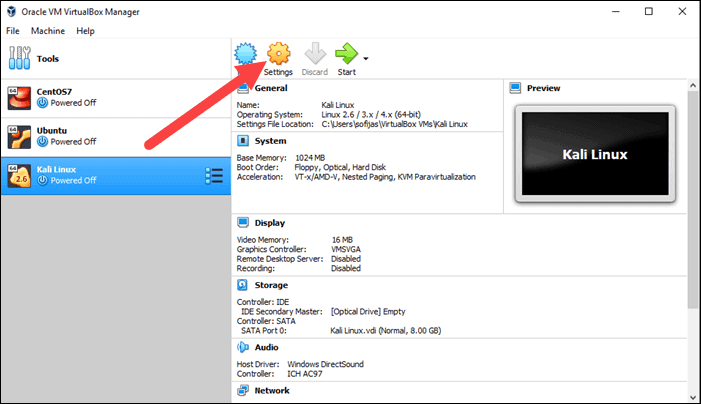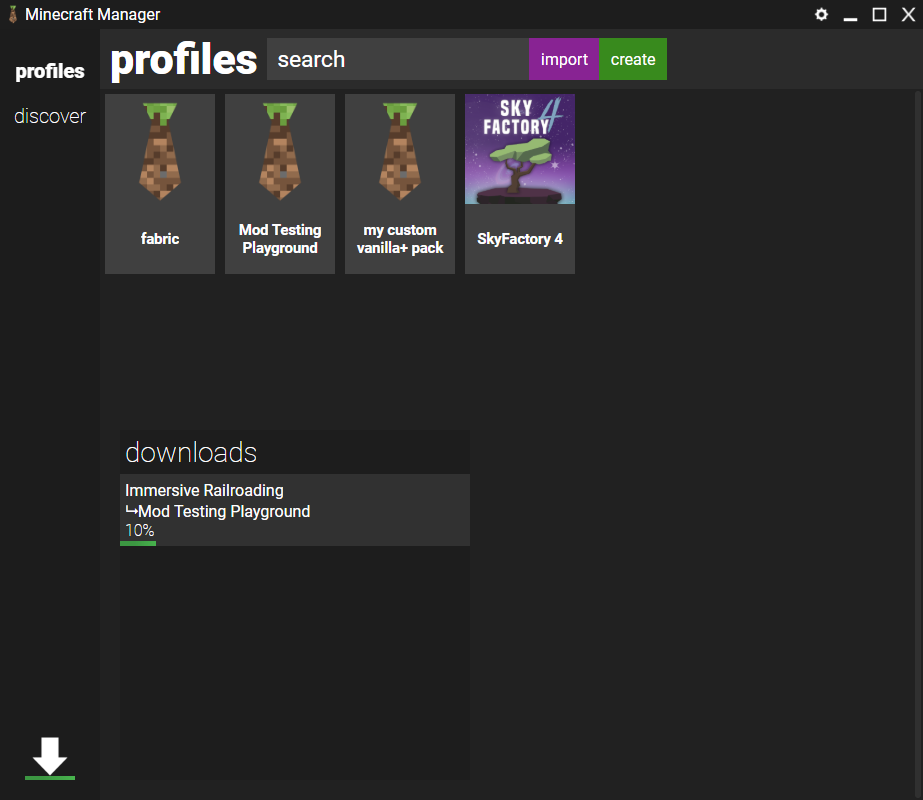If the host machine is 64-bit and you are using VirtualBox to host and running your virtual machine, don’t be puzzled if your VirtualBox is showing you that it can only support for 32-bit of operating system. This isn’t “normal” and you can fix it to enable VirtualBox to support 64-bit OS.
- Virtualbox For Windows 7 32 Bit
- Virtualbox 32bit Win7
- Virtualbox Only 32 Bit Windows 7
- Oracle Virtualbox For Windows 7 32 Bit
- Virtualbox 64 Bit Windows 7
- Regardless how incredible is the idea to run any operational system on your PC, it is still true. By using the virtual emulator, you can install literally any system on your Windows-based computer: Linux, Unix, FreeBSD, Android, Mac OS X, even not mentioning all the systems from Windows generation: from ancient Win 95 and 98 builds to the latest Win 8.1 and Win 10 releases (both 32- or 64-bit).
- VirtualBox - Free Download for Windows 10 64 bit / 32 bit Download VirtualBox latest version 2019 free for windows 10, 8, 8.1 and 7 Setup installer 64 bit, 32 bit. Number #1 virtualization software to test any software in an isolated and virtual environment.
- Once I had the installation media in my possession, I fired up VirtualBox. If you’re wanting to do what I did, here are the steps: In VirtualBox Manager, click New. Enter the name for your virtual machine and select the type and version; as mentioned previously, I’m using Windows 7 (32-bit).
There are a couple of methods to install Windows XP Virtual machine on Windows 10 using different platforms such as Oracle VirtualBox, Vmware and Hyper-V.
Windows XP is an old but dominated operating system of the world during its heydays. However, this Windows XP is not supported officially but available in bootable ISO image form for free to download and use. Yes, we don’t need to pay anything for Windows XP Service Pack 3 Licenses and ISO, both are available on an internet archive website.
Here we will show how to install Windows XP on Oracle VirtualBox as an emulator on Windows 10 step by step using its ISO file. This will allow you to continue to use Windows XP on Emulator without having to install it on your PC.
Windows XP virtual machine on VirtualBox
Here is the glance of the steps we are going to follow for the installation of Window XP Virtual Machine using ISO file on VirtualBox running on Windows 10. However, steps will be the same for Windows 8, Windows 7 and Windows Vista.
- Download Windows XP ISO file and copy the license key as well and save it on a notepad. For links see the main step 1 of this article.
- Install Oracle VirtualBox on your Windows 10/8/7 PC
- Run the VirtualBox and click on the NEW button to create a new Virtual Machine.
- Type the name of OS -Windows XP and rest will set by default.
- Create Virtual Hard disk (VHD) and set RAM.
- Select the created Windows XP virtual Machine appearing on the left side of the VirtualBox main screen.
- Click on Settings option from the menu.
- Select the StorageSettings
- Click on the empty CD icon and then again from the attributes select the CD icon.
- Navigate and select the downloaded windows XP ISO file.
- Save it and Start the Virtual Machine and Windows XP boot menu will appear.
- Follow the installation wizard and it will be on your Oracle Virtualbox to experience.

Step 1: Download Windows XP ISO and License
The first step towards the Virtual installation is to get an ISO image of this old operating system. As I mentioned above that it is free and avail by Microsoft itself officially along with License key. Thus, use this link which will open the page of Archive.org, where click on the ISO image link given on the right side under the Download section, this will allow you to download Windows XP Professional SP3 x86 ISO image. Just on the same page, the free but official professional key for the same will have been given. Copy that and jot down somewhere like NotePad.
Virtualbox For Windows 7 32 Bit
Step 2: Install VirtualBox on Windows 10/8/7
So, we have now the ISO file of Windows XP professional 32-bit service pack 3, its time to get the Oracle VirtualBox. Here is the link to Download VBox. In case you already have the Vbox on your system then simply move to next.
The installation of the VBox is like any other executable software meant for Windows nothing will be complicated at all.
Step 3: Create a Virtual Machine for Windows XP
Run VirtualBox and click on the New button given on the Menu of it. Now in the Name box, type- Windows XP and its corresponding options will automatically get setup. Then click on the Next button.
Step 4: Set memory size (Virtual RAM)
Although the Windows XP perfectly works under 512 MB RAM, however, here we are assigning 1GB for better working and smooth performance.
Step 5: Create Virtual Hard disk (VHD) for XP virtual machine
To store the installation file we need to attach a Virtual Hard drive to our Virtual Machine. The VirtualBox will automatically set it to 10GB which is enough. Thus, leave the default settings and click on the NEXT.
On the Next window, it will ask you to select the type of Virtual Hardrive, by default it will be VDI, however, here we are selecting VHD. It is because in case, tomorrow we want to run it under Windows Hyper-V, we can easily use the Windows XP VHD image.
Next, Select Dynamic allocated option.
File allocation and Size: By default, the VirtualBox will save all file of the machine on C: drive, if you want to change click on the folder icon and select the place.
Finally, click on the Create button.
Step 6: Set ISO image for boot
Select the created VirtualMachine and click on the Settings button given on the top menu of VBox.
From Settings -> click on the Storage-> Empty CD icon under storage device-> again on CD icon of Attributes and then “Choose Virtual Optical Disk File“.
An explorer will open select the downloaded Windows XP ISO image.
Click on the OK button.

Step 7: Start Window XP Virtual Machine
Now, our XP Virtual Machine is ready, time to boot it up. For that select the created virtual machine from the left side of the VBox panel and click on the Start button given in the menu of the same.
Virtualbox 32bit Win7
Step 8: Installing Window XP
Windows XP Professional Setup will open, press the Enter button to continue.
Press F8 to accept the Windows XP Licensing Agreement.
As we are installing Windows XP on VirtualBox, thus, a single partition will appear, simply press the enter button to format the whole partition.
By default, slow formatting option will be selected, use the arrow key of the keyboard and select “ Format the partition using the NTFS file system (Quick)”.
After some time, it will ask you to enter the license key for Windows XP. Type this official serial key: MRX3F-47B9T-2487J-KWKMF-RPWBY and click on the NEXT button to complete the installation.
Once it will be done, you will get the old but very familiar interface of Windows XP with familiar startup sound.
Virtualbox Only 32 Bit Windows 7
Thus, in this way, we can install our old Windows XP system on VirtualBox Virtual Machine for testing legacy software or learning purpose.
Oracle Virtualbox For Windows 7 32 Bit
Other Articles to read:
Virtualbox 64 Bit Windows 7
Presently, VirtualBox runs on Windows, Linux, Macintosh, and Solaris hosts and supports a large number of guest operating systems including but not limited to Windows (NT 4.0, 2000, XP, Server 2003, Vista, Windows 7, Windows 8, 10), DOS/Windows 3.x, Linux (2.4, 2.6 and 3.x), Solaris and OpenSolaris, OS/2, and OpenBSD.
VirtualBox is being actively developed with frequent releases and has an ever growing list of features, supported guest operating systems and platforms it runs on. VirtualBox is a community effort backed by a dedicated company: everyone is encouraged to contribute while Oracle ensures the product always meets professional quality criteria.
Hot picks:
* phpVirtualBox AJAX web interface project site
* Whitepaper: Optimizing the desktop using Sun VirtualBox (reg. req'd)
* Watch the VirtualBox Live Show
* VirtualBox press coverage: homepage
Some of the features of VirtualBox are:
* Modularity. VirtualBox has an extremely modular design with well-defined internal programming interfaces and a client/server design. This makes it easy to control it from several interfaces at once: for example, you can start a virtual machine in a typical virtual machine GUI and then control that machine from the command line, or possibly remotely. VirtualBox also comes with a full Software Development Kit: even though it is Open Source Software, you don't have to hack the source to write a new interface for VirtualBox.
* Virtual machine descriptions in XML. The configuration settings of virtual machines are stored entirely in XML and are independent of the local machines. Virtual machine definitions can therefore easily be ported to other computers.
* Guest Additions for Windows, Linux and Solaris. VirtualBox has special software that can be installed inside Windows, Linux and Solaris virtual machines to improve performance and make integration much more seamless. Among the features provided by these Guest Additions are mouse pointer integration and arbitrary screen solutions (e.g. by resizing the guest window). There are also guest additions for OS/2 with somewhat reduced functionality.
* Shared folders. Like many other virtualization solutions, for easy data exchange between hosts and guests, VirtualBox allows for declaring certain host directories as 'shared folders', which can then be accessed from within virtual machines.
A number of extra features are available with the full VirtualBox release only (see the 'Editions' page for details):
* Virtual USB Controllers. VirtualBox implements a virtual USB controller and allows you to connect arbitrary USB devices to your virtual machines without having to install device specific drivers on the host.
* Remote Desktop Protocol. Unlike any other virtualization software, VirtualBox fully supports the standard Remote Desktop Protocol (RDP). A virtual machine can act as an RDP server, allowing you to 'run' the virtual machine remotely on some thin client that merely displ